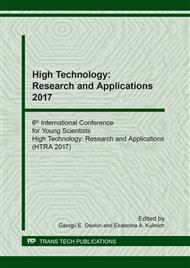p.269
p.277
p.284
p.290
p.296
p.311
p.317
p.323
p.329
Effect of Dual Surface Cooling on the Temperature Distribution of a Nuclear Fuel Pellet
Abstract:
Heat removal from nuclear reactor core has been one of the major Engineering considerations in the construction of nuclear power plant. At the center of this consideration is the nuclear fuel pellet whose burning efficiency determines the rate of heat transfer to the coolant. This research, focuses on the study of temperature distribution of solid fuel, temperature distribution of annular fuel with external cooling and the temperature distribution of annular fuel with internal and external cooling. We analyzed the different distribution and made a conclusion on the possibility of improving temperature management of Nuclear fuel rod, by designing fuel pellets based on this geometrical and thermal Analysis. To date, a lot of studies has been done on the thermal and geometrical properties of Nuclear fuel pellet, it is observed that annular fuel pellet with simulteneous internal and external cooling can achieve better temperature distribution which leads to high linear heat generation rate, thus generating more power in the design [1]. It has also been observed that annular fuel pellets has low fission gas release [10]. In large LOCA, the peak cladding temperature of annular fuel is about 600 which is significantly less than that of solid fuel (920 ), this is due to the fact that annular fuel cladding has lower initial temperature and the thinner annular fuel can be cooled more efficiently than the solid fuel. One of drawbacks of annular fuel technology is “the fuel gap conductance assymmetry” which is caused by outward thermal expansion, it has a potential effect on the MDNBR (Minimum Departure from Nucleate Boiling Ratio), which is the minimum ratio of the critical to actual heat flux found in the core [10]. In this model, we used the ceramic fuel pellet of UO2 as our case study. All the parameters in this model are assumed parameters of UO2. The Heat Transfer tool (ANSYS APDL) was used to validate the Analytical Model of this research.
Info:
Periodical:
Pages:
296-310
Citation:
Online since:
April 2018
Price:
Сopyright:
© 2018 Trans Tech Publications Ltd. All Rights Reserved
Share:
Citation:


